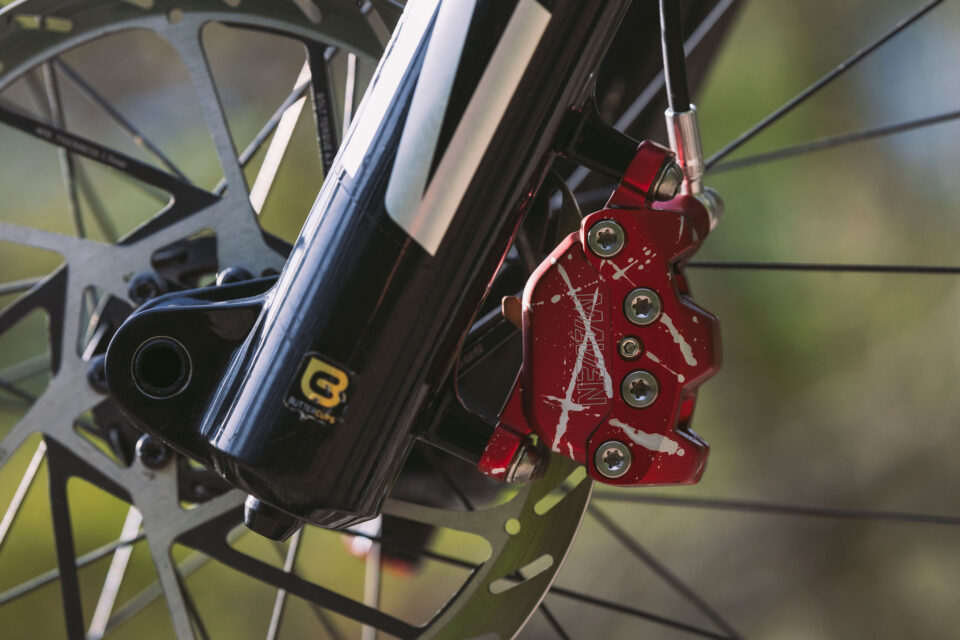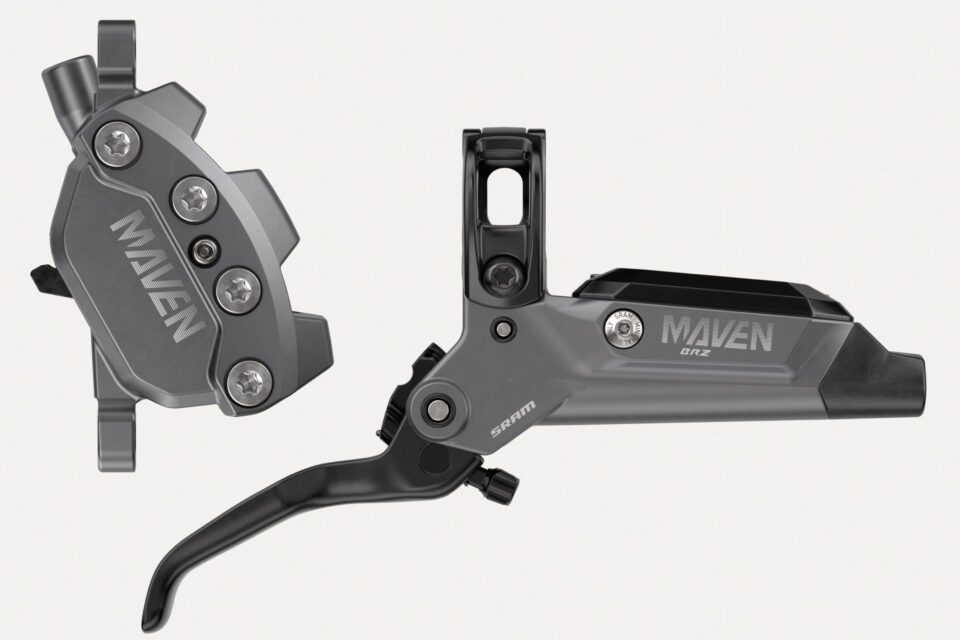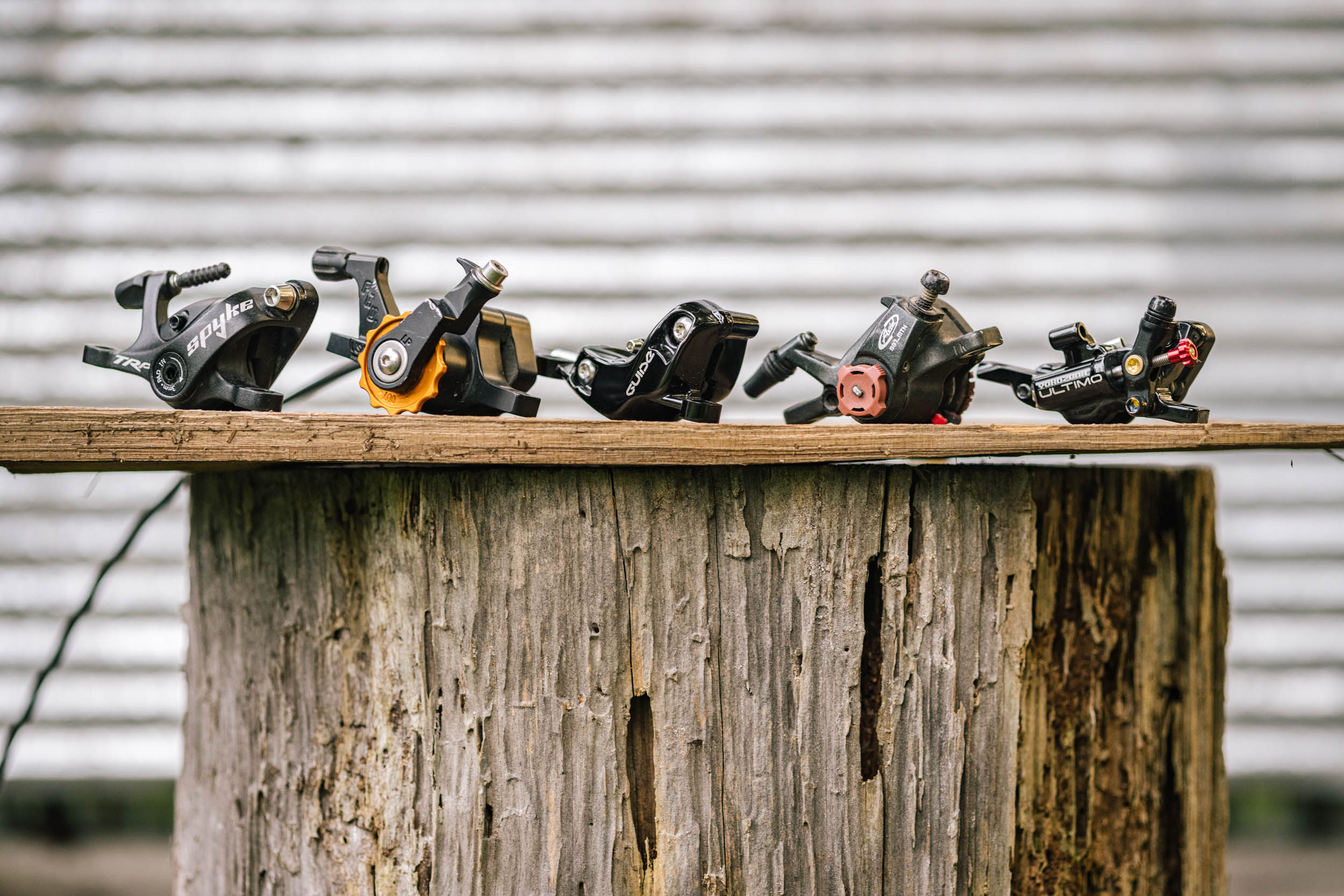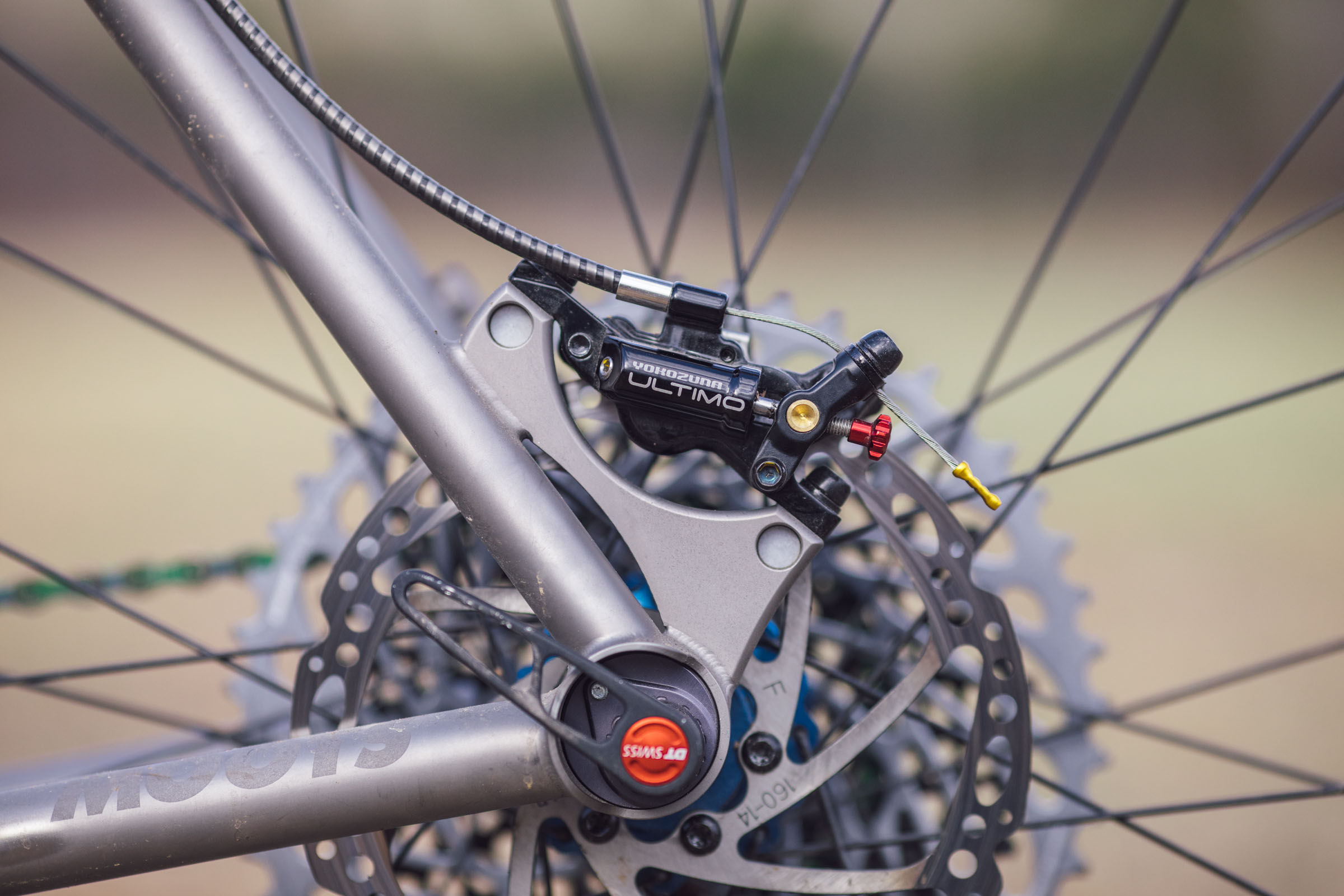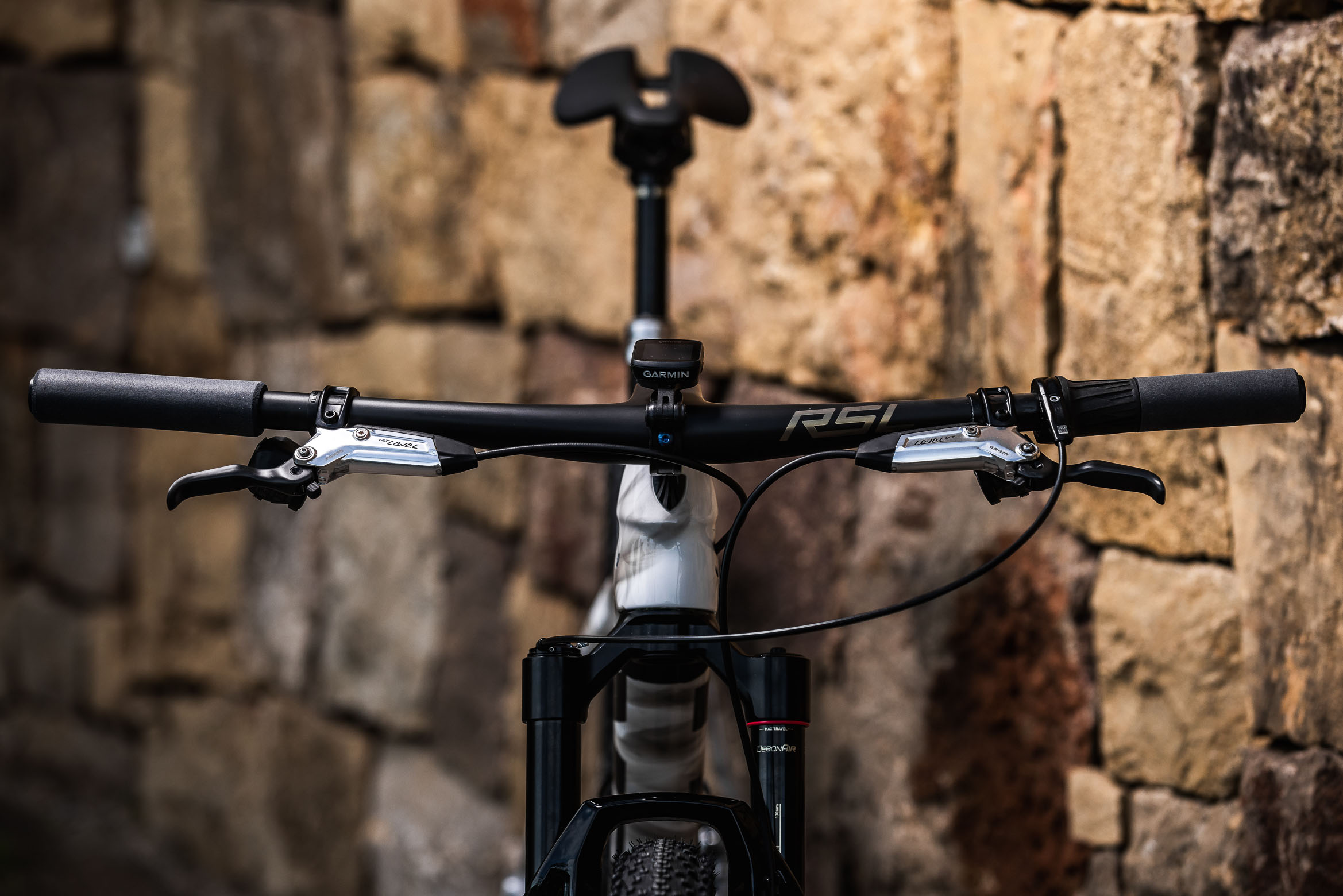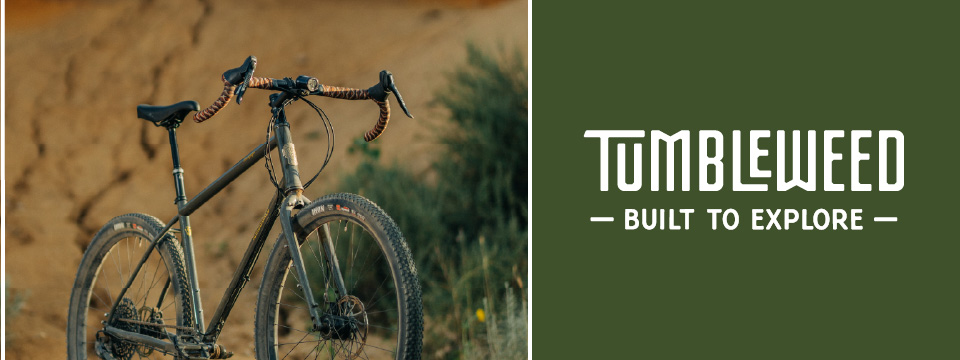Just announced, the new SRAM Maven brakes run mineral oil instead of DOT fluid and have a few unique features, including oversized pistons and a four-bolt construction. Find more details here…
Aside from the bar-routed stealth levers, the biggest thing that caught our attention about the new SRAM Maven brakes was that they use mineral oil, something outside the norm for SRAM. This is a welcome change for the simple fact that it’s a less toxic material than DOT fluid, which is what most other SRAM brakes used prior to their introduction of mineral oil with the launch of the latest DB8. SRAM claims the Maven was designed to overcome past weakness associated with mineral oil—I’m guessing they’re referring to heat management and seals. The Maven is uses a new proprietary heat-tolerant seal and a caliper housing that’s designed with thermal mass to better manage heat gain and loss.
According to their press materials, the Maven is the most powerful brake SRAM has ever made. Maven produces nearly 50% more power than the SRAM Code. And while the Maven is made primarily for gravity/downhill mountain biking, it might be interesting for folks who are into loaded trail bikepacking or heavier riders in general. SRAM also claims that it takes 32% lighter force at the lever to generate the same amount of power as Code brakes. Part of this comes from four oversized pistons measuring 19.5mm and 18mm. For a comparative example, the Hope Tech E4—one of my favorite brakes—has 16mm pistons. SRAM also mentions that the Maven offers better feathering and control by using a new “SwingLink” linkage that adjusts the rate of leverage throughout the lever stroke.
Another interesting feature on the Maven is the use of four chunky caliper body bolts. SRAM states that these aren’t just for show, and instead, they reduce power loss at the caliper by eliminating flex. The Maven uses a unique XL brake pad that is available in two compounds: organic or sintered.
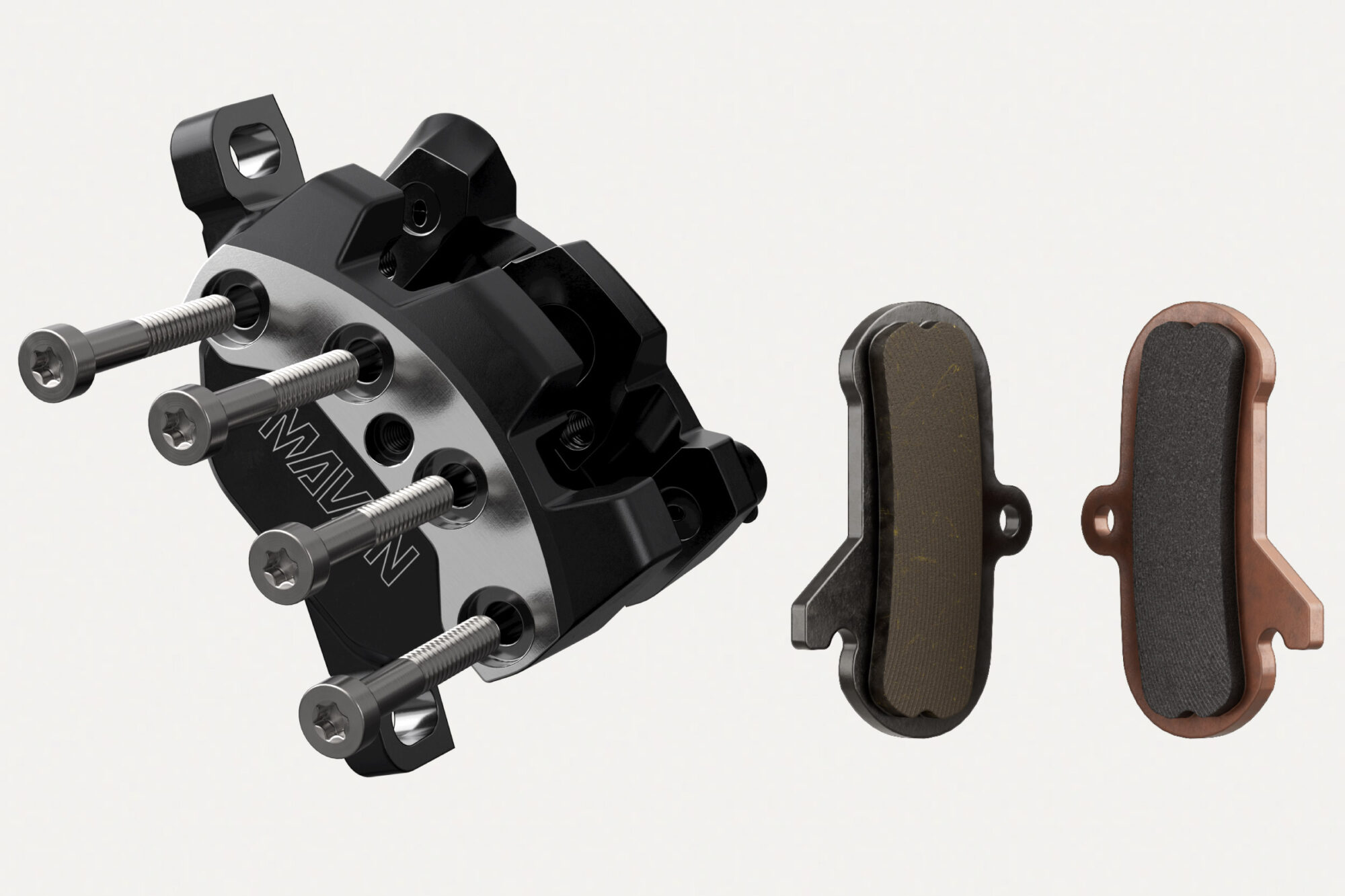
Oddly, SRAM recommends folks using the Maven to start small with rotors: “the smallest rotor size that your frame and fork can accept is the recommended starting point when tuning Maven.” For every 20mm jump in rotor size, the mechanical advantage is 14%. This means that going from a 180mm rotor to a 220mm rotor would boost system power by 28%. SRAM says that too big of a rotor could also lead to not enough heat being generated, and a smaller rotor where the optimal amount of heat is being generated could actually have more bite on the trail. SRAM recommends paying attention to the color of the spokes on your rotors, which can be a tell of how your rotors are performing:
- Browned or bronzed discoloring means the size is optimal.
- Purple or rainbow discoloring means your rotors are running too hot and sizing up would be suggested.
- No distinct discoloring would suggest they aren’t getting hot enough and sizing down would lead to optimal performance.
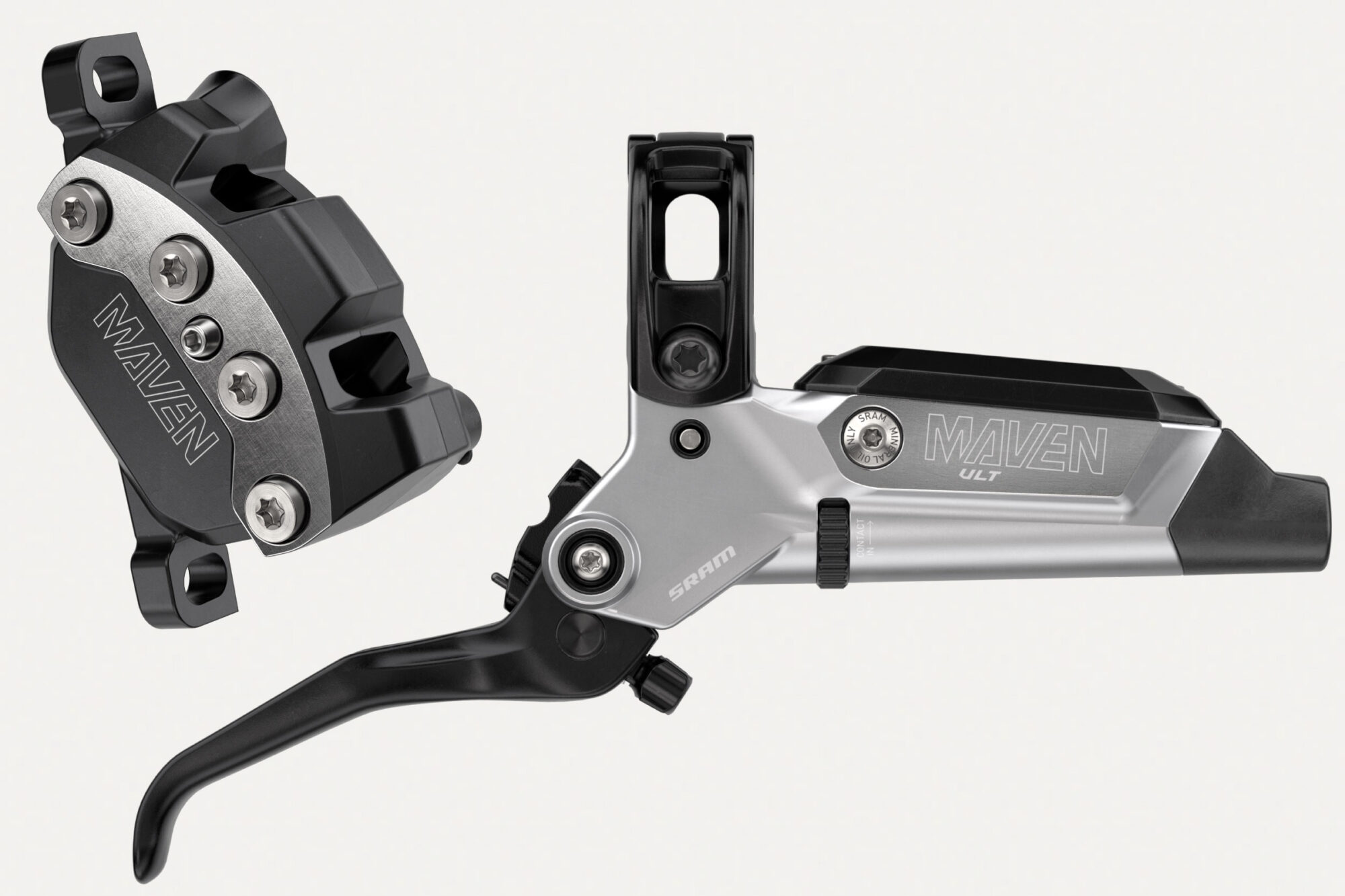
The Maven is available in several options with the following prices: Maven Ultimate ($300), Maven Silver ($265), and Maven Bronze ($185). They all weigh between 362-370 grams, with the main differences being finish and the fact that Ultimate and Silver both features tool-free Reach and Contact Point Adjust, whereas Bronze only has tool-free Reach Adjust. Ultimate also gets titanium hardware and the option for the red splash finish. Find more details over at SRAM.com.
Further Reading
Make sure to dig into these related articles for more info...
Please keep the conversation civil, constructive, and inclusive, or your comment will be removed.









